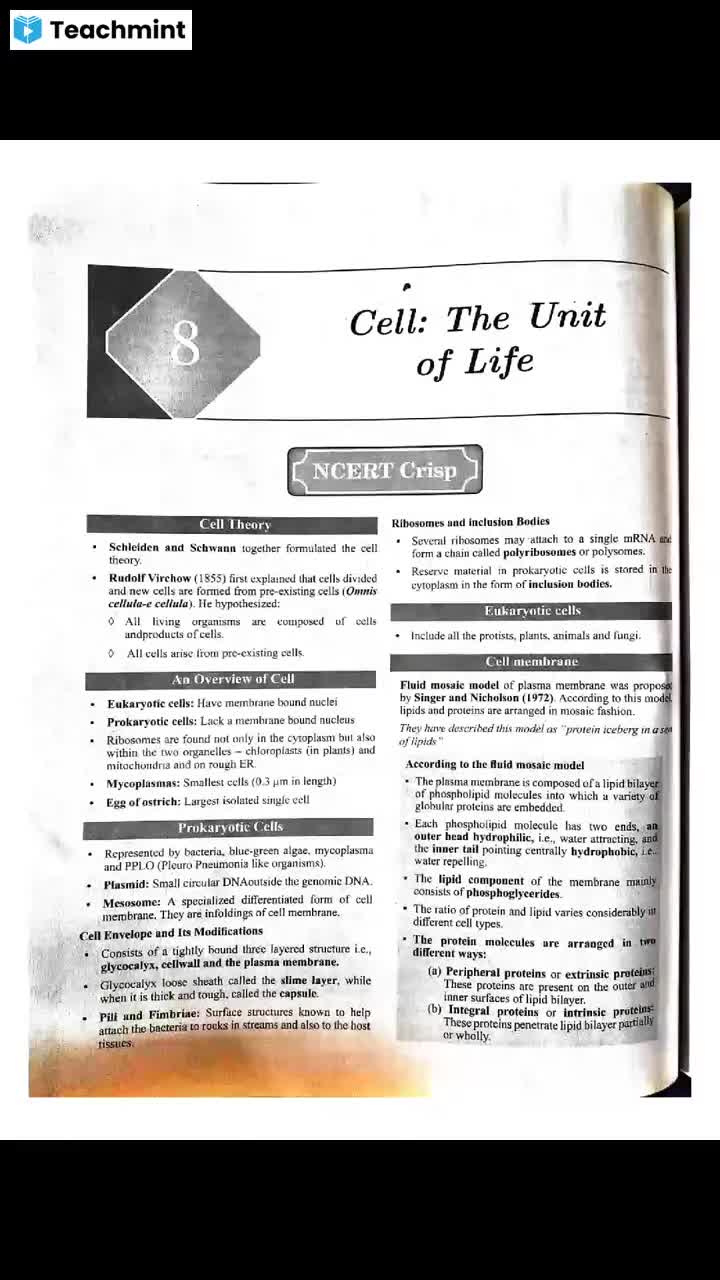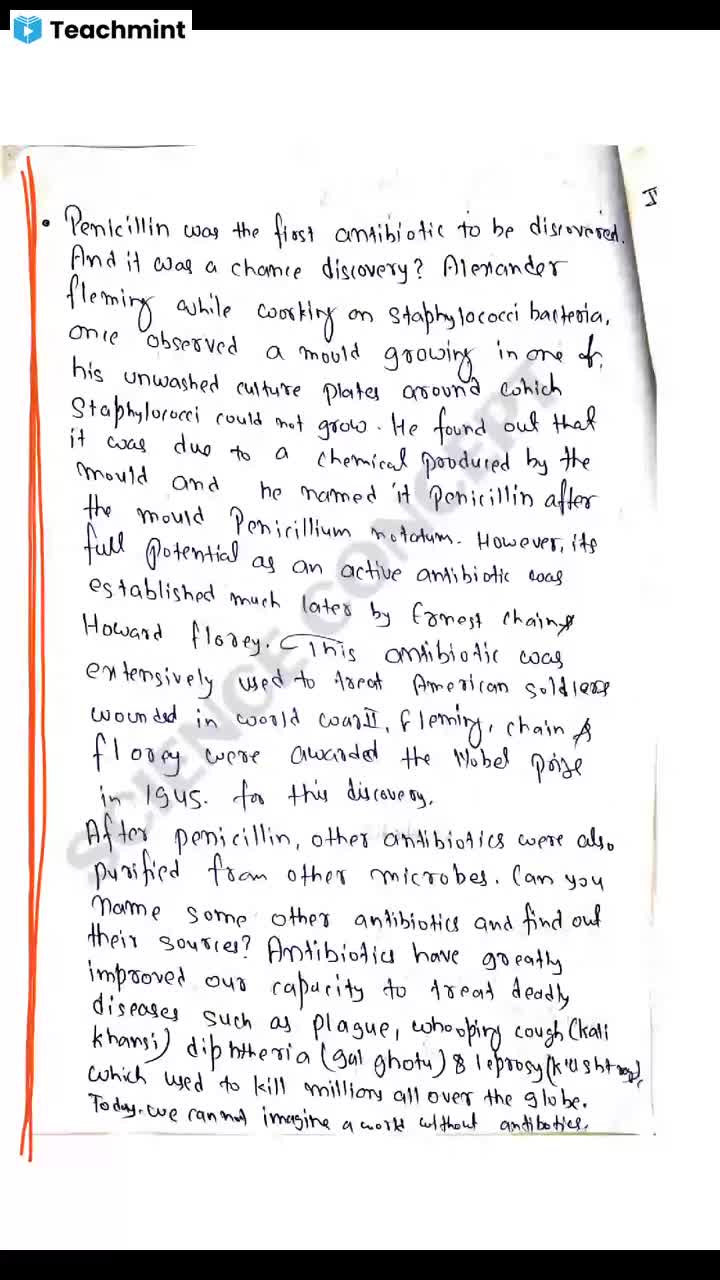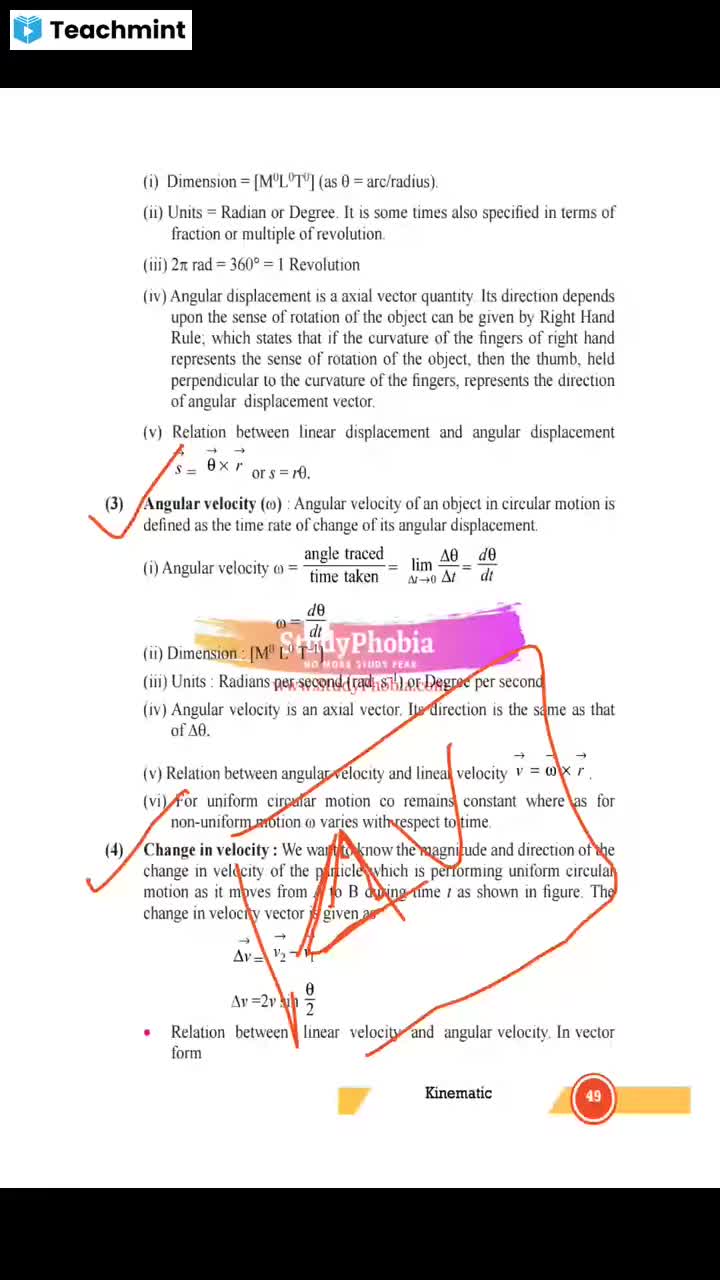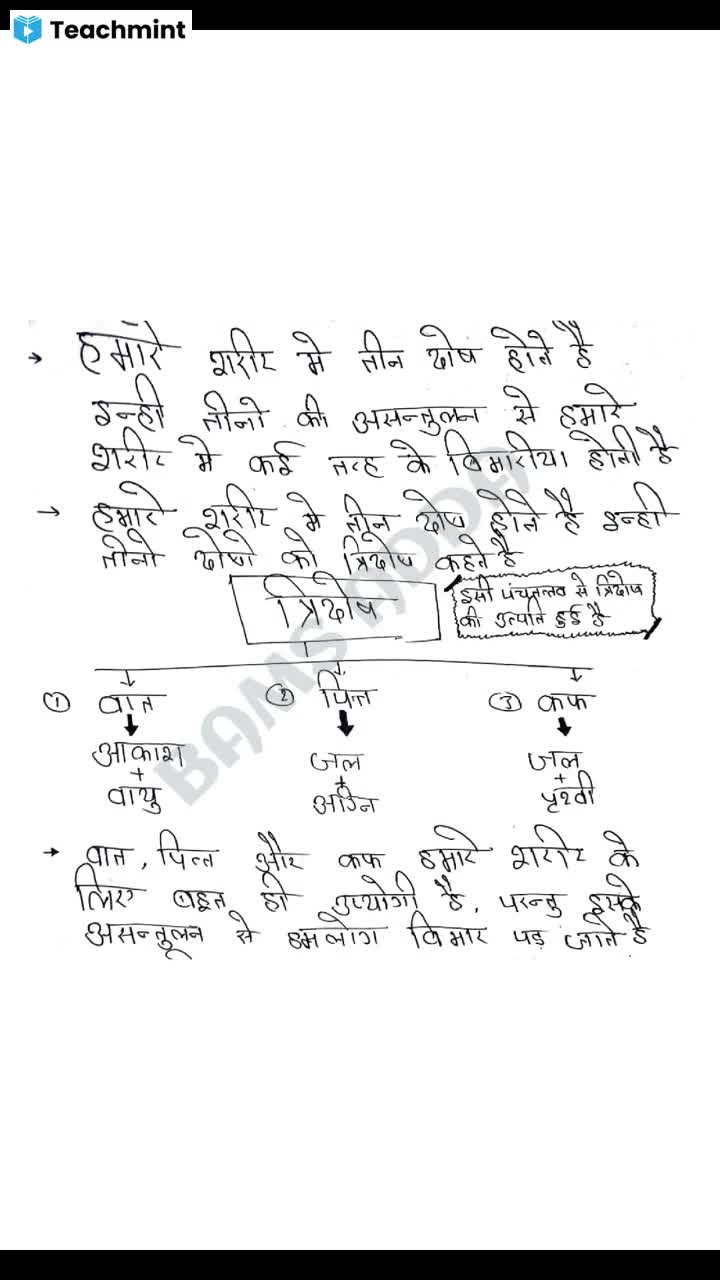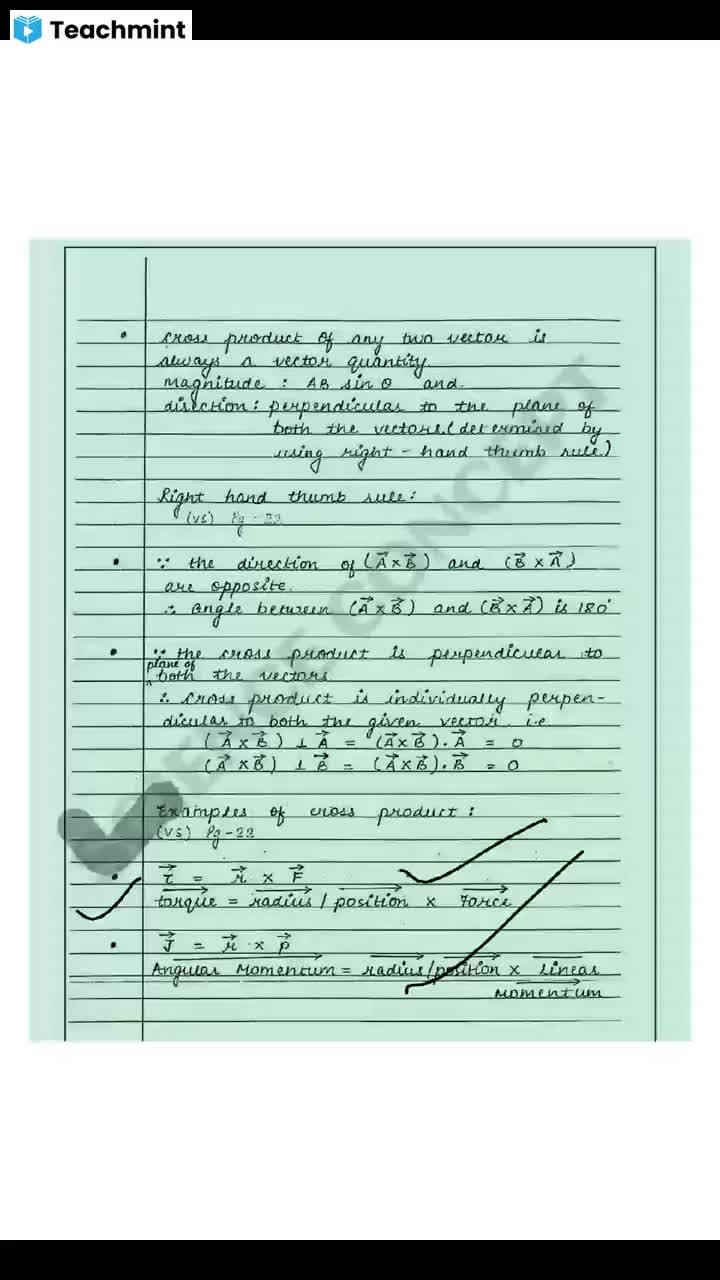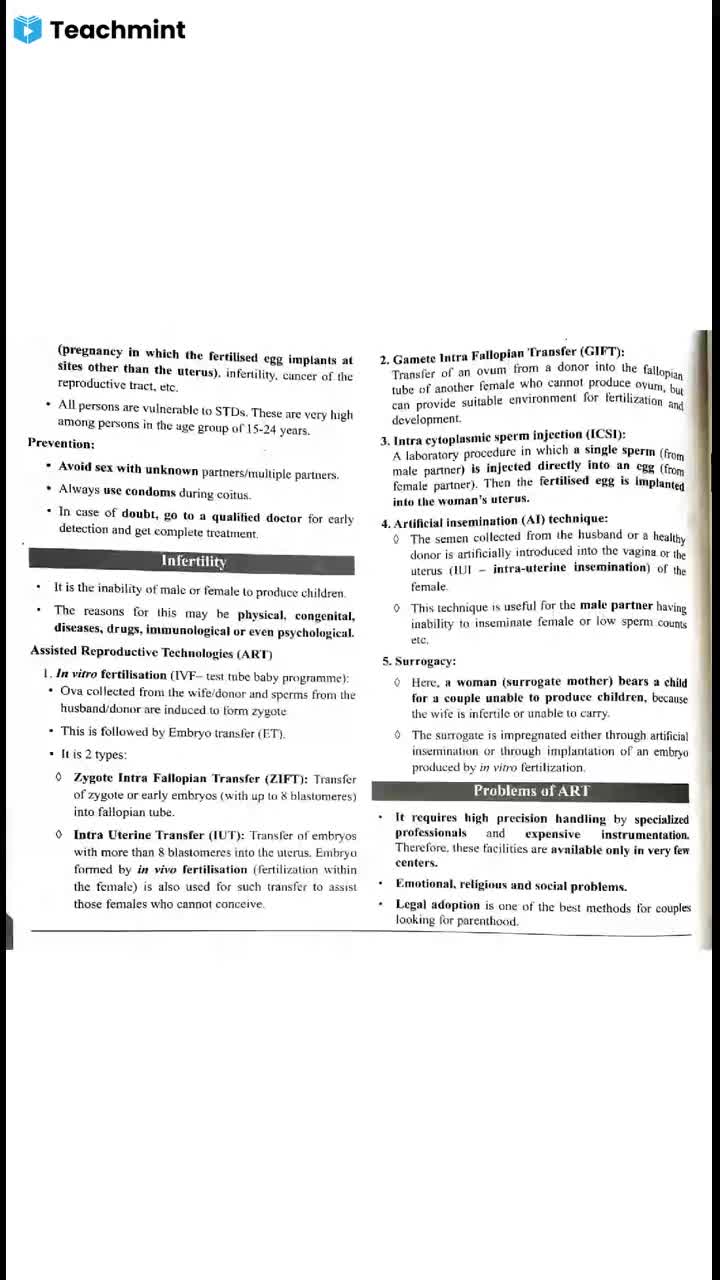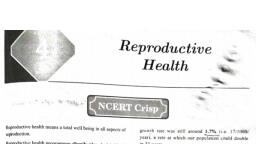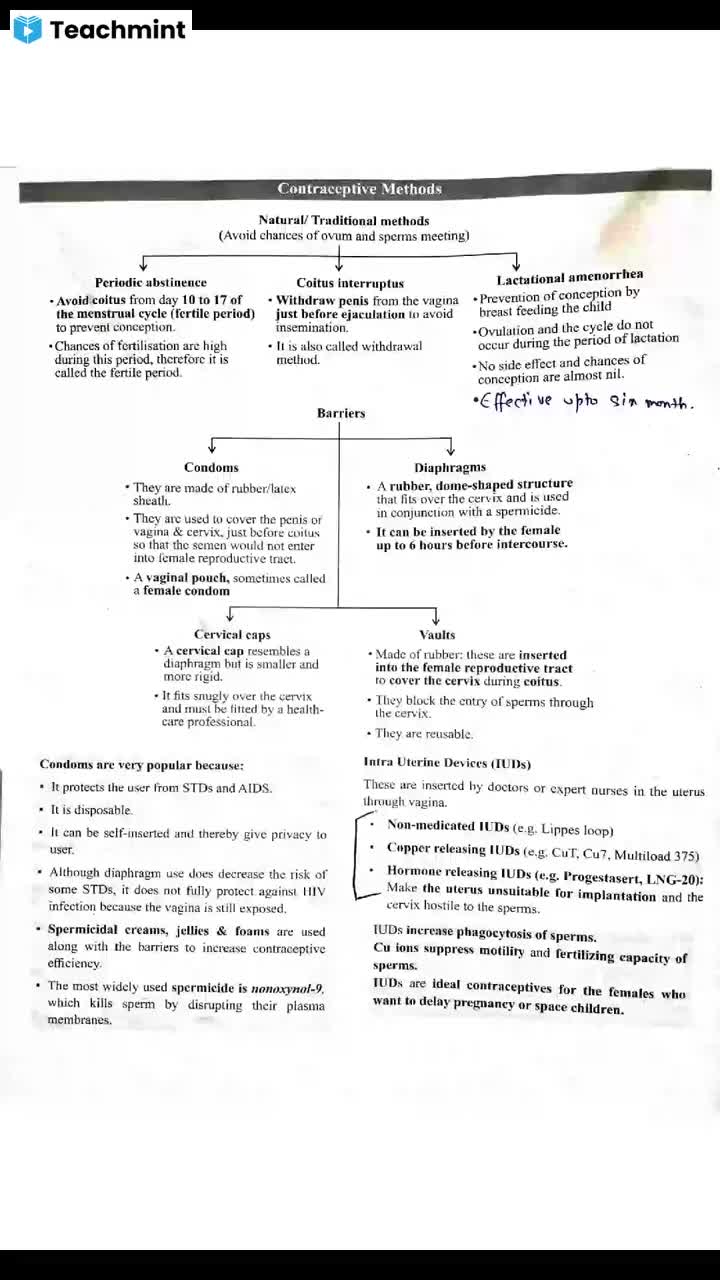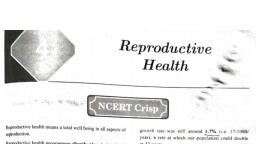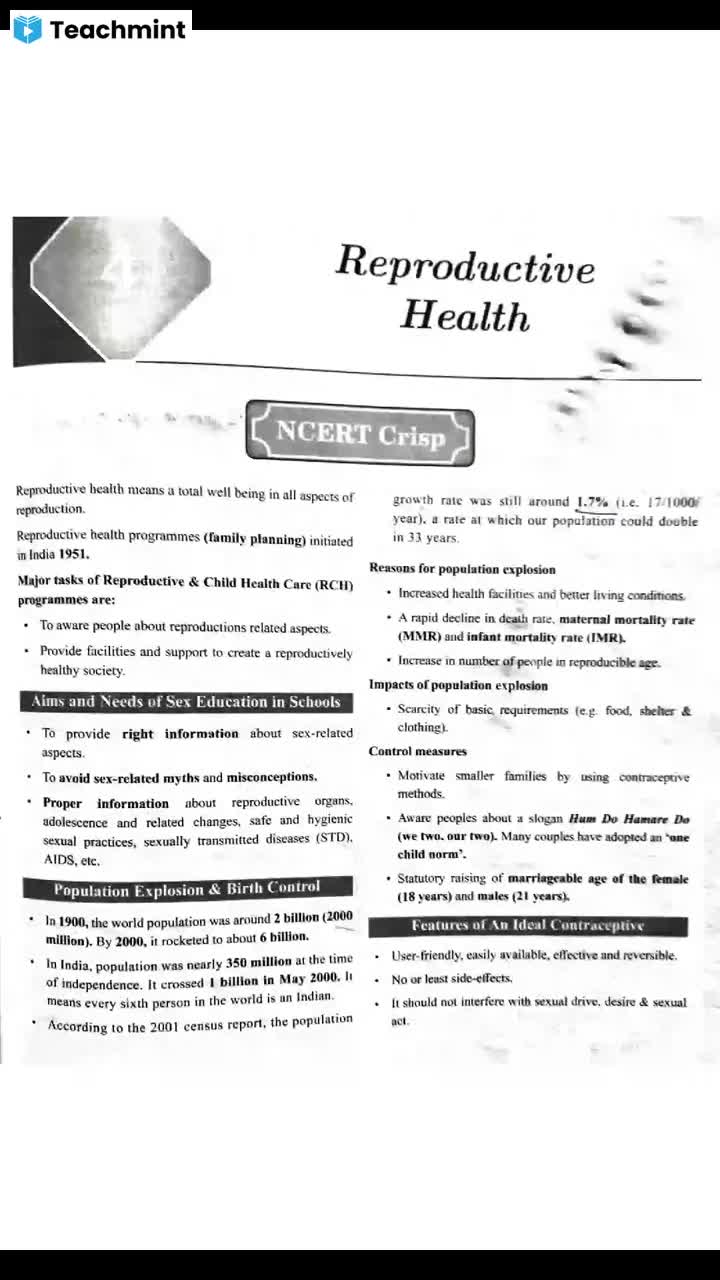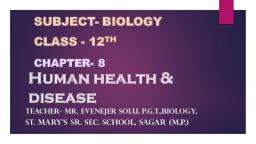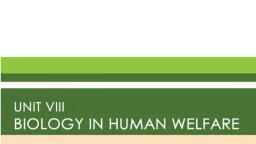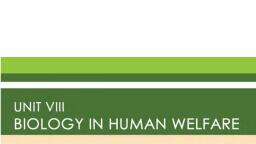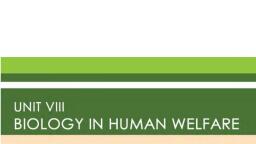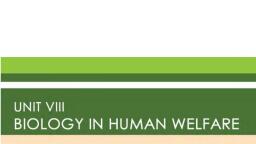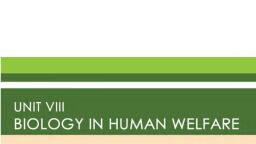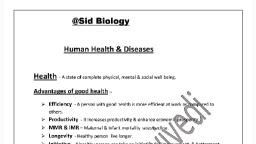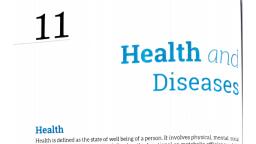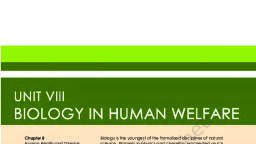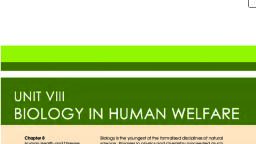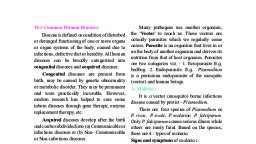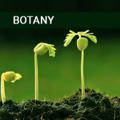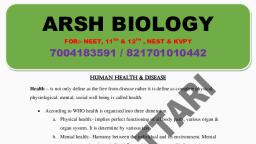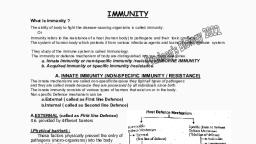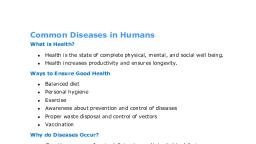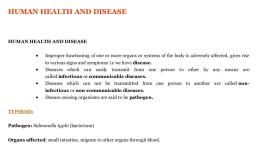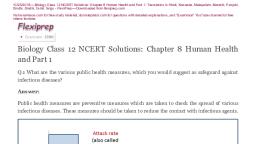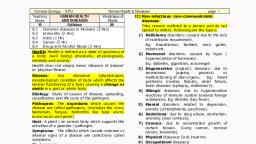Page 1 :
UNIT VIII, BIOLOGY IN HUMAN WELFARE, , , , Chapter 8 Blolegy |s the youngest of the formetised alsciplines of natural, Human Health ond Disease science. Progress in physics ana chemistry proceeded much, , faster than in Biology. Applications of physics and chemistry in, Chapter? our dally life also have a higher visibility than those of biology., Strategies for Enhancement in However, twentieth century and certainly twenty-first century, Food Production hes demonstrated the utility of biological knowledge In, , furthering human welfare, be it in health sacter or agriculture., Chapter 10 The discovery of antibiotics, and synthetic plant-derived drugs,, Microbes in Kumen Welfare angesthetics have changed mecicel practice on one hand, , and human health on the other hand. Life expectancy of, human beings have dramatically changed over the years., Agricultural practices, food processing ond diagnostics have, brought socio-cultural changes in human communities. These, are briefly described in the following three chapters of this unit.
Page 2 :
Bom In August 1925 in Kumbakonarn in Tamil Nadu, Monkamlou Sambosivan, Swaminathan did his graduation and post-graduation in Botany from, Madras University. He worked in different capacities in large number of, Institutions In India ond abroad onc developed his expertise In genetics, ond plant breeding., , The School of Cytogenetics and Radiation Research established at the, Inclan Agriculture’ Research Institute (ARID enabled Swaminathan and his, tear to develop short-duration high-yielding varieties of ice including scented, Basmoti He is also known for the development of the concept of crop, cafeteria, crop scheduling and genetically mproving the yield and quality, , Swaminathan initiated collaboration with Norman Borlaug, which, culminated in the ‘Green Revolution’ through introduction of Mexican, M.S. SWaMINeTHAN ——Vegioties of wheat in India. This wes highly recognised and oppreciated. He, , oe 6 also the initiator of ‘Lab-ta-Land’, food security and several other, environmental programmes. He has been honoured with Padma Bhushan, ond several other prestigious awards, medals and fellowships by institutions, of excellence, , , , , , 2021-22
Page 3 :
CHAPTER 8, HUMAN HEALTH AND DISEASE, , 8.1 Common Diseases in, , , , Humans, a2 1 ‘ny Health, fora long time, was considered as a state of body, and mind where there was a balance of certain ‘humors’., 83 AIDS This is what early Grecks like Hippocrates as well as, 84 Caner Indian Ayurveda system of medicine asserted. It was., , thought that persons with “blackbile’ belonged to hot, personality and would have fevers. This idea was arrived, at by pure reflective thought. The discovery of blood, circulation by William Harvey using experimental method, and the demonstration of normal body temperature in, persons with blackbile using thermometer disproved the, “good humor hypothesis of health. In later years, biology, stated that mind influences, through neural system and, endocrine system, our immune system and that our, immune system maintains our health. Henee, mind and, mental state can affect our health, Of course, health is, affected by =, ( genetic disorders - deficiencies with which a child ts, born and deficiencies /defects which the child inherits, from parents from birth;, (ii) infections and, (iii) life style including food and water we take, rest and, exercise we give to our bodies, habits that we have or, lack etc,, , 8&5 Drugs and Aleohol Abuse, , 2021-22
Page 4 :
BIOLOGY, , The term health is very frequently used by everybody. How do we, define it? Health does not simply mean ‘absence of disease’ or ‘physical, filmess’. Tl could be defined as a state of complete physical, mental and, social well-being. When people are healthy, they are more ellicient at, work. This increases productivity and brings economic prosperity. Health, also increases longevily of people and reduces infant and maternal, mortality., , Balanced diet, personal hygiene and regular exercise are very important, to maintain good health. Yoga has been practised since time immemorial, to achieve physical and mental healih. Awareness aboul diseases arid, their effect on different bodily functions, vaccination (immunisation), againsl infectious diseases, proper disposal of wastes, control of vectors, and maintenance of hygiene in food and water resources are necessary, for achieving good health., , When the functioning of one or more organs or systems ol! the body is, adversely affected. characterised by appearance of various signs and, symptoms, we say that we are not healthy, i.e., we have a disease. Diseases, can be broadly grouped into infectious and non-infectious. Discascs, which are easily transmitted from one person to another, are called, infectious diseases. Infectious discases are very common and every, one of us suffers from these at sometime or other. Some of the infectious, diseases like AIDS are fatal. Among non-irectious diseases, carcer is the, major cause of death. Drug and alcohol abuse also allect our health adversely., , 8.1 Common DISEASES IN HuMANS, , A wide range of organisms belonging to bacteria, viruses, fungi,, protozoans, helminths, etc., could cause diseases in man. Such diseasecausing organisms are called pathogens. Most parasites are therefore, pathogens as they cause harm to the host by living in (or on) them. ‘The, pathogens can enter our body by various means, multiply and interfere, with normal vital activities, resulting in morphological and functional, damage. Pathogens have to adapt to life within the environment of the, host. For example, the pathogens that enter the gut must know a way of, surviving in the stomach at low pH and resisting the various digestive, enzymes. A few representative members from different groups of, pathogenic organisms are discussed here alongwith the diseases, by them. Preventive and control measures against these diseases, are also briefly described., , Salmonella typhiis a pathogenic bacterium which gauses typhoid, fever in human beings. These pathogens generally enter (he small intestin€é, through food and water contaminated with them and mi “to other, organs through blood. Sustained high fever (29° |, wer ss,, stomaeh-pain, constipation, headache and ee are some of, the common symptoms of this disease. Intestirafperforation and death, may occur in severe cases. Typhoid fever could be confirmed by, , 2021-22
Page 5 :
HUMAN HEALTH AN, , d was a typhoid carrier who continued to spread typhoid for several, years through the food she prepared., , Bacteria like Streptococcus pmeumeniceaid Haemophi ple, are responsible for the disease pneumonia in humans which infects the, alveoli (air filled sacs) of the lungs. As a result of the infection, the alveoli, get filled with fluid leading to severe problems in respiration. The symptoms, of pneumonia include lever, chills, cough and headache. In severe cases,, the lips and finger natts"Tfayv turn_gray to bluish in colour. A healthy, person acquires the infection by inhaling the droplets/acrosols released, by an infected person or even by sharing glasses and utensi, infected person. Dysentery, plague, diphtheria, etosee ;, bacterial diseases in man., , Many viruses also cause diseases, represent one such group OL sieerst, , ccnpeetis 4 and discharge, sorpe.tiffoat, hoarseness, cough, headache,, tiredness, etc., ?sually last. for 3-7 days. Droplets resulling from, cough or sneezes of an infected person are cither inhaled directly or, transmitted through contaminated objects such as pens, books, cups,, doorknobs, computer keyboard or mouse, etc., and cause imection ina, healthy person., , Some of the hurnan diseases are caused by prolozoans loo. You might., have heard about malaria, a disease man has been fighting since many, years. Plasrnodiurn, a tiny is responsible for this disease. Different., , , , , Rasmodian enters the human body. as ‘sporasoties (infectious fort, through the bite of infected female Anopheles mosquito. The parasites, initially multiply within the liver cells and then attack the red blood cells, (RBCs}] resulting in their rupture. ‘The rupture of RBCs is associated with, release of a Loxic substlarice, haemozoin, which is responsible for the chill, and high fever recurring every three to four days. When a female Anopheles, mosquito bites an infected person, these parasites enter the mosquito’s, body and undergo further development. The parasites multiply within, them to form sporozoites that are stored in their salivary glands. When, these mosquitoes bite a human, the sporozoites are introduced into his/, her body, thereby initiating the events mentioned above. It is interesting, to note that the malarial parasite requires two hosts - human and, mosquitoes — to complete ils life cycle (Figure 8.1); the female Anopheles, mosquito is the vector (transmitting agent) too., , 2021-22

